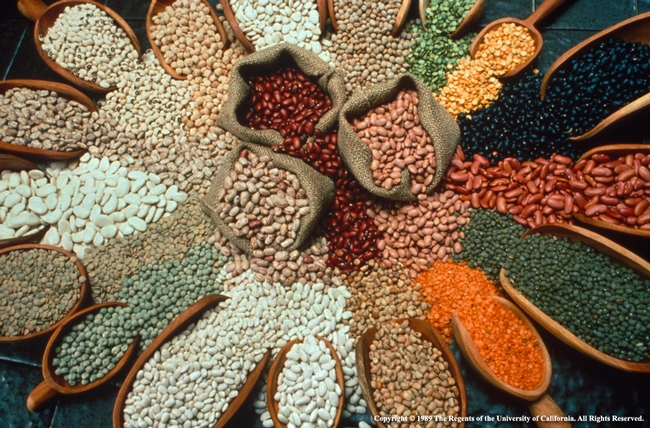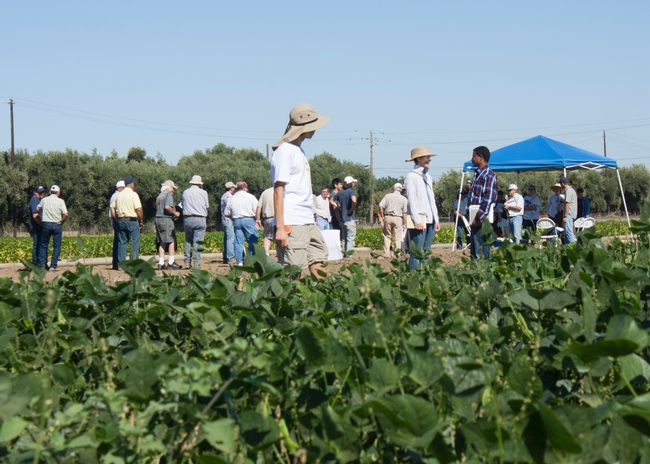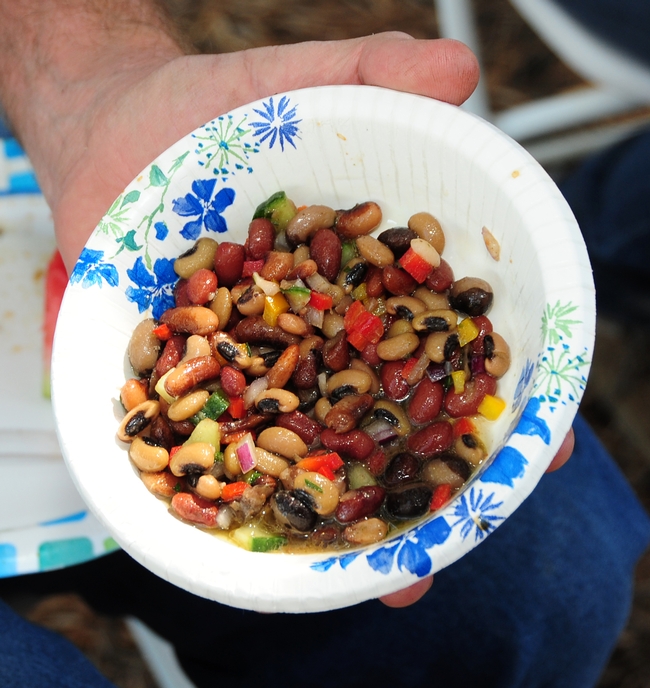Posts Tagged: beans
Lovin' the Fava Beans
Every time we see honey bees pollinating fava bean blossoms, we think of actor Anthony Hopkins. Remember that malevolent scene in the...
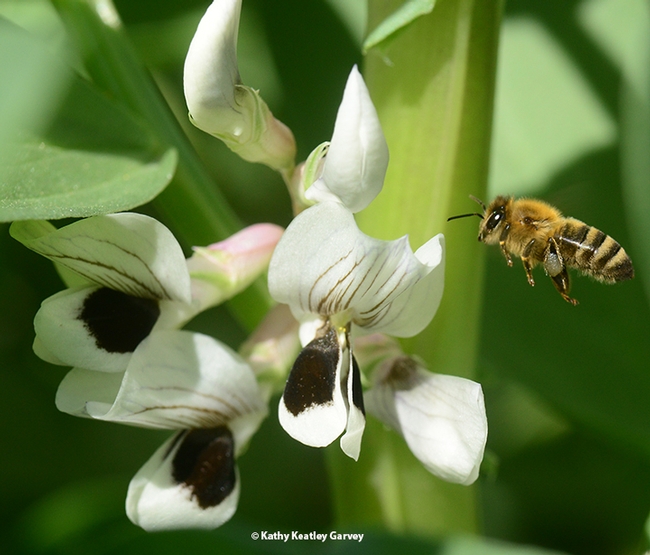
A honey bee heads for fava bean blossoms. Note the silver-gray pollen. (Photo by Kathy Keatley Garvey)
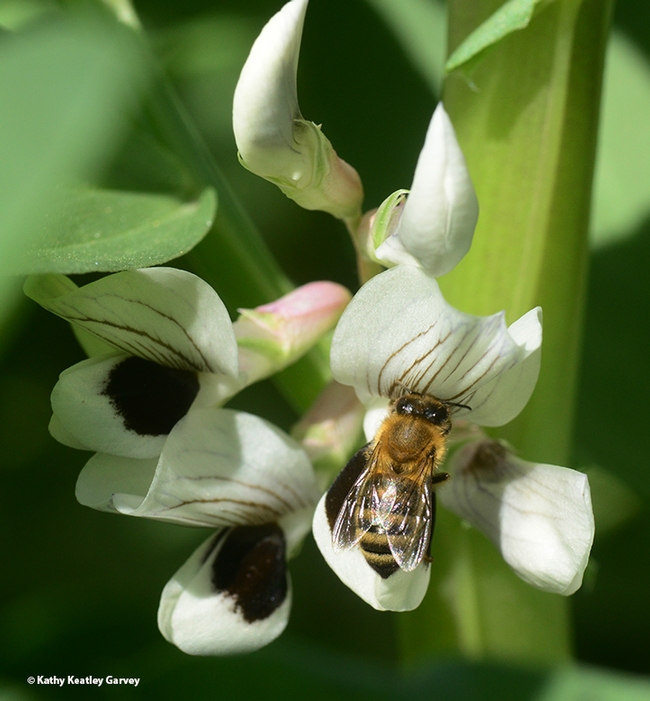
Success! A honey bee foraging on a fava bean blossom. (Photo by Kathy Keatley Garvey)
A Big Cheer for a Crab Spider
What happened in our pollinator garden on June 3 probably would have promoted a standing ovation from agriculturists who grow cotton, strawberries,...
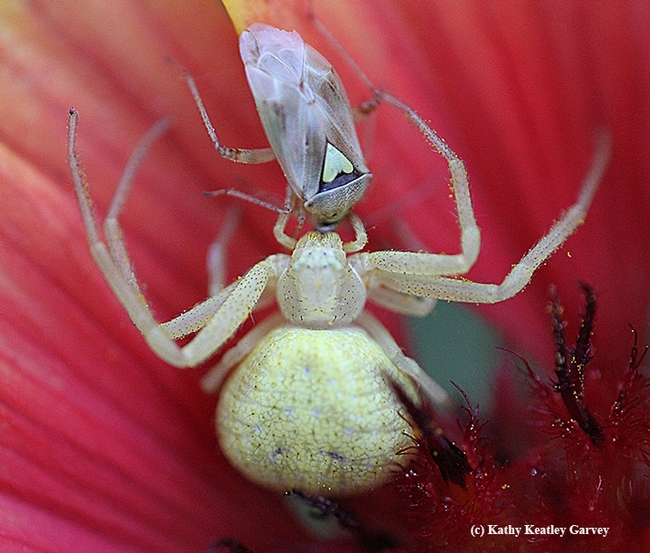
A crab spider nails an agricultural pest, a lygus bug. (Photo by Kathy Keatley Garvey)
UC Field Day showcases California’s dry-bean research advancements
California consumers may not “know beans about beans,” but they should.
Dry beans are a big business in California. In 2011, growers harvested 45,000 acres of dry beans valued at $58 million. Lima beans accounted for about 40 percent of this total acreage, with California producing nearly 99 percent of the U.S. domestic supply of dry lima beans.
Why should we be so interested in beans? From a nutritional standpoint, dry beans are a healthy food choice - an excellent source of protein, fiber, vitamins and minerals, plus they’re very low in fat. Organizations such as the American Heart Association, the American Diabetes Association and the USDA’s My Plate all recommend including beans in one’s diet to reduce cholesterol, maintain normal blood sugar and to maintain a healthy weight. The California Dry Bean Advisory Board posts many bean recipes on their website at http://calbeans.org/.
From a production standpoint, beans are a crucial crop for farmers. California growers produce four main classes of dry beans, including limas (large and baby), common beans (such as kidneys, pinks, whites, cranberries and blacks), garbanzos (chickpeas), and cowpeas (blackeye beans). Garbanzo beans are grown as a winter crop, while the others are produced in the summer. California’s dry beans are marketed throughout the world, including Japan, Mexico, Canada, and the United Kingdom. California also grows dry bean seed stock for export to other states and international markets.
In rotation with other crops beans help control weeds, add biomass to the soil via plant matter disked into the ground after harvest, and require relatively few pesticides. In addition, beans, as legumes, fix nitrogen from the air via nitrogen-fixing bacteria that colonize the roots, forming nodules. Cowpeas, for example, fix about 100 pounds of nitrogen per acre, providing most of the nitrogen needs for this crop. Likewise, garbanzo beans require minimal nitrogen inputs for crop production. Economically, beans can enhance the annual farm profitability because common beans and cowpeas can be double-cropped with grains or forage crops, producing two crops in one year.
University of California scientists showcased their dry bean research advancements at the annual UC Dry Bean Field Day, held Sept. 5 at the UC Davis agronomy farm. The event drew more than 50 growers, industry representatives, students, faculty members and UC Cooperative Extension farm advisors.
The participants learned about UC research trials, led by Paul Gepts, professor in the Department of Plant Sciences at UC Davis, focus on dry bean breeding programs for pest and disease resistance, drought tolerance, organic production, and yield and quality increases. “Dry” refers to allowing the beans to fully mature and dry on the plants, as opposed to picking the beans green as a fresh market vegetable.
Many of today’s commercially grown dry beans come from University of California varieties, such as those shown at the UC Field Day. Seed germplasm for different genetic traits are selected from all over the world. The lima bean trial at UC Davis included 56 seed selection entries, the heirloom beans included 25 entries, and cranberries and pink beans had 134 entries. Earlier this year eight advanced line garbanzo entries were tested. UC Davis researchers work with hybrids produced by hand crosses to increase seed yield, quality, pest and disease resistance and plant vigor. They receive funding from a variety of sources including the California Dry Bean Advisory Board and USDA.
As shown from this field day, UC research is leading the way to ensuring that the future of California’s dry bean industry remains strong. These efforts will continue to enhance sustainable farming practices in our state and provide nutritional benefits to consumers.
The bottom line is that beans are good for you. A special treat at the UC Davis Field Day luncheon, served at picnic tables shaded by olive trees on Bee Biology Road, was a locally produced three-bean salad. It vanished within minutes. “Excellent!” the attendees raved.
So, the next time you’re in the produce section of your favorite grocery store, enjoy some California-grown beans. From the field to fork, these beans are the best of the best.
Additional resources:
Blackeye bean production in California, UC ANR publication number 21518.
Common bean production in California, UC ANR publication 8402.
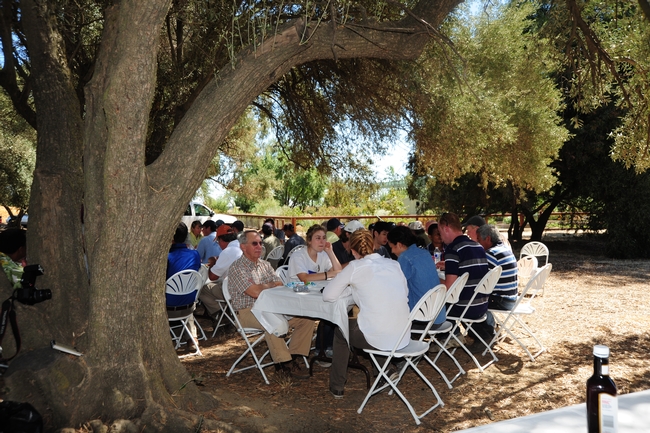
Dry bean field day luncheon at UC Davis. (Photo: Kathy Keatley Garvey)
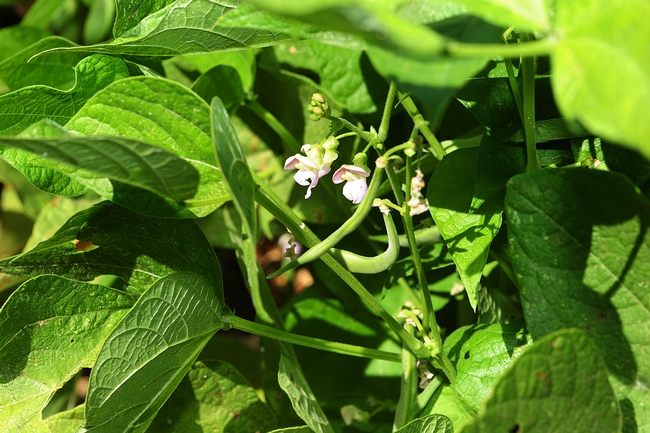
Bean plant. (Photo: Kathy Keatley Garvey)
Small Garden's Harvest
The first small garden harvest is in. Picture one shows the beginning of the garden, minus the tomato plants. Picture two is the first harvest.
This first harvest may not look like a lot to some gardeners who have a larger garden area to plant in. I have a very small spot where an avocado tree once grew-this is now the small garden.
In this small garden, you will find growing--Kentucky Pole green beans, which are producing more than we can eat now, so we are freezing them for winter. Growing next to the green beans are yellow string beans. In addition to the beans, there are two sweet green peppers, also a Jalapeño, and a peperoncini, 2 sweet Italian long peppers, that I am anxiously waiting for them to turn one yellow the other red, a medium size Italian white eggplant, that has 5 eggplants that are just about ready to be picked.
Tucked in between a Heavenly Bamboo (Nandina domestica) and a (Butterfly bush) Buddleia are 2 tomato plants that are heavy with fruit. In addition to these, I have 3 tomatoes plants in large containers. All the tomatoes were started from seed and are the heirloom variety. Scattered around the yard in containers you can find zucchini, patty pan squash, cucumbers, shallots and a leek, also 3 different kinds of basil, to go with the tomatoes for a caprese salad or tomato sandwiches.
So I have learned if you really want a vegetable garden, you will find the space for it. They need some tending almost every day, especially the ones in the containers, but well worth the effort.
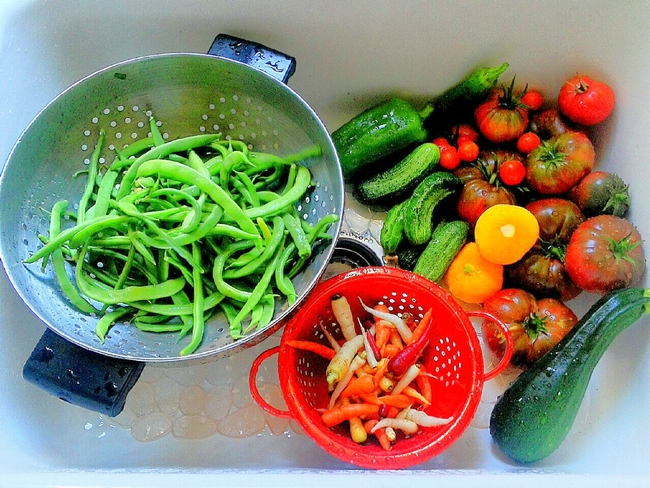
Colorful harvest. (photo by Toni Greer)
Sure Sign of Spring
What's red and black with yellow all over? Ladybugs, aka lady beetles or ladybird beetles, laying their yellow eggs. It's a sure sign of spring...

Ladybugs mating; the female continues to munch aphids. (Photo by Kathy Keatley Garvey)
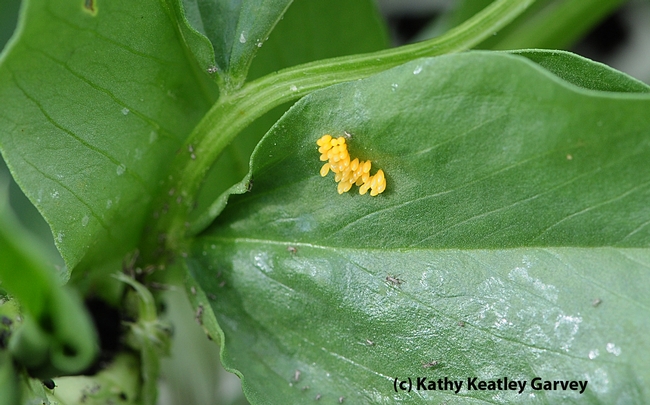
Close-up shot of ladybug eggs. (Photo by Kathy Keatley Garvey)
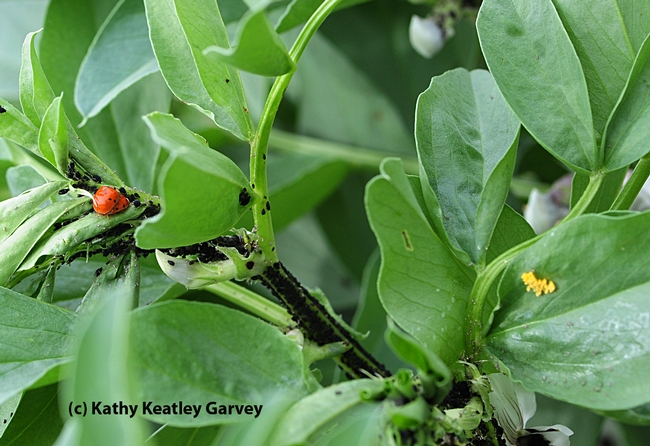
Panoramic view of ladybugs, aphids, and ladybug eggs. (Photo by Kathy Keatley Garvey)


